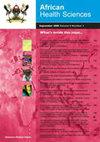坦桑尼亚达累斯萨拉姆一家三级教学医院紧急剖腹产的分娩间隔、产妇和胎儿结局决定
IF 0.9
4区 医学
Q3 MEDICINE, GENERAL & INTERNAL
引用次数: 0
摘要
背景:紧急剖宫产(CS)回答了手术应该多快进行的问题。当决定分娩间隔(DDI)超过75分钟时,孕产妇和胎儿结局会恶化。本研究旨在确定Muhimbili国立医院(MNH) CS类别的DDI、孕产妇和胎儿结局。方法:2017年9月至11月,对MNH的427名紧急CS进行了描述性横断面研究。使用SPSS 23.0版本提取数据并进行分析,计算频率、平均值、卡方检验和DDI,以确定其与CS类别的关联。 结果:1、2、3类CS的平均DDI分别为126.73、133.57、160.08 min。只有2例(0.5%)和54例(12.6%)的1类和2类紧急CS分别达到建议的DDI 30和75分钟。母胎不良结局随DDI的增加而增加。DDI与产妇不良结局无显著相关性(OR: 1.2;95% CI 0.49-2.83)和胎儿结局(OR: 1.7;95% CI 0.91-3.38)。 结论:DDI≥75 min时不良母胎结局比例较高,根据患者的急迫性进行分诊是减少延长DDI的关键。 关键词:剖宫产类;母婴结局;决定交付间隔。本文章由计算机程序翻译,如有差异,请以英文原文为准。
Decision to delivery interval, maternal and fetal outcomes in emergency caesarean sections in a tertiary teaching hospital, Dar es salaam, Tanzania
Background: Emergency caesarean section (CS) answers the question on how soon the procedure should be performed. Maternal and fetal outcomes deteriorate when decision to delivery interval (DDI) exceeds 75 min. This study aimed at determining the DDI, Maternal and fetal outcomes in CS categories at Muhimbili National Hospital (MNH).
Methodology: A descriptive cross-sectional study involving 427 emergency CS at MNH was conducted from September to November, 2017. Data was extracted and analysed using SPSS version 23.0 where frequency, means, chi-square test and DDI were calculated to determine its association with categories of CS.
Results: The mean DDI for category one, two and three CS were 126.73, 133.57 and 160.08 min respectively. Only two (0.5%) and 54 (12.6%) of category one and two emergency CS met the recommended DDI of 30 and 75 min respectively. Maternal and fetal adverse outcome were increasing with increase in DDI. There was no significant association between DDI and adverse maternal outcome (OR: 1.2; 95% CI 0.49-2.83) and fetal outcome (OR: 1.7; 95% CI 0.91-3.38).
Conclusion: The proportions of adverse maternal and fetal outcome were high when DDI was ≥ 75 min. Improving triage of the patients according to their urgency is crucial in reducing prolonged DDI.
Keywords: Caesarean section category; maternal and fetal outcome; decision to delivery interval.
求助全文
通过发布文献求助,成功后即可免费获取论文全文。
去求助
来源期刊

African Health Sciences
MEDICINE, GENERAL & INTERNAL-
CiteScore
2.30
自引率
0.00%
发文量
179
审稿时长
>12 weeks
期刊介绍:
The African Health Sciences is an internationally refereed journal publishing original articles on research, clinical practice, public health, policy, planning, implementation and evaluation, in the health and related sciences relevant to Africa and the tropics. Its objectives are to: Advocate for and promote the growth of reading culture in sub Saharan Africa; Provide a high quality journal in which health and policy and other researchers and practitioners in the region can and world wide, can publish their work; Promote relevant health system research and publication in the region including alternative means of health care financing, the burden of and solution of health problems in marginalized urban and rural communities amongst the displaced and others affected by conflict; Promote research and the systematic collection and collation and publication of data on diseases and conditions of equity and influence; Promote development of evidence-based policies and guidelines for clinical, public health and other practitioners. African Health Sciences acknowledges support provided by the African Health Journals Partnership Project that is funded by the US National Institutes of Health (through the National Library of Medicine and the Fogarty International Center) and facilitated by the Council of Science Editors.
 求助内容:
求助内容: 应助结果提醒方式:
应助结果提醒方式:


